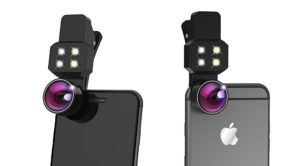
Photo: Richard Butler Many cameras, especially entry-level models, most often come as a kit with a lens. Appropriately referred to as 'kit' lenses, they are typically 'standard zooms' offering a range from fairly wide angle to moderate telephoto (such as 18-55mm on APS-C cameras).
The focal length range is versatile and works well for many subjects, which helps you test the waters right away without spending money on additional lenses. They are also affordable, helping keep the cost of your kit down, and are typically compact, making them easier to take with you.
However, there are downsides to the kit lens. If you are interested in growing your skills as a photographer, you will likely reach the point where you've outgrown the kit lens and need to upgrade to something else. Knowing when you've reached that level can be tricky, though.
Signs you've outgrown your kit lens
Everyone's experience and situation are different, so there isn't one exact timeframe or answer for when to upgrade. However, below are some common signs that could suggest it might be the right move.
You're struggling in low light
Most kit lenses offer rather small maximum apertures. That means you have to compensate with a slower shutter speed or higher ISO when working in low-light situations, which isn't always ideal. Making matters even worse, most have variable maximum apertures, meaning you lose light as you zoom in.
Upgrading to a higher-end lens will provide you with a wider maximum aperture, making it easier to work in low light. Plus, that maximum aperture will stay constant when you zoom in and out, meaning the lens's low-light performance doesn't degrade when you zoom in to longer focal lengths.
You can't blur the background as much as you'd like
The Fujifilm XF 16-55mm F2. 8 R LM WR II is essentially an upgraded version of a kit lens. The F2. 8 aperture makes it easier to blur the background than the similar Fujifilm XC 16-50mm F3. 5-5. 6 OIS lens.
Photo: Richard Butler
Another issue with the small maximum aperture is depth of field. Wider apertures allow you to get a shallower depth of field, creating a blurry background that helps keep the focus on your subject. Aperture isn't the only thing that controls depth of field, but due to its smaller aperture, it can be difficult to achieve a small area in focus with a nicely blurred background when using a kit lens.
If you like the look of slim areas in focus with bokeh in the background (or foreground) and are struggling to create that with the kit lens, then upgrading to a lens with a wider maximum aperture will be smart.
You're having difficulty capturing sharp images
While new kit lenses have shown substantial improvements in image quality, most still lag behind higher-end lenses simply because they are built to be budget-friendly. Kit lenses often suffer from a few image quality issues that can be frustrating.
The primary image quality issue with kit lenses is that they may not be very sharp on the edges of the frame or at both ends of the zoom. You may notice that the center is nice and sharp, but the corners look out of focus. Stopping down your aperture can help, but you don't always want to resort to that.
Kit lenses can have other issues that affect apparent image sharpness, such as color fringing – especially on high-contrast edges, where cyan or magenta lines commonly appear. They can also suffer from more pronounced lens flare and ghosting (bright spots, streaks or duplicate shapes), which may take away from overall sharpness and clarity.
If you're frustrated by the image quality you're getting because of a lack of sharpness or strong color fringing, then it's probably time to upgrade.
Build quality is a concern
When producing lenses that are designed to be budget-friendly, manufacturers inevitably have to make some sacrifices to keep the cost down. Build quality is often one of those sacrifices. Kit lenses are typically made of lightweight plastics and lack weather sealing, which can make them more prone to breaking.
Higher-end alternatives generally use sturdier materials and feature weather sealing to protect against dust and water. As a result, they are more durable and better able to withstand adverse conditions. If you know you want to take your camera in wet or dusty environments, or simply want to have a durable lens for daily use, you may want to upgrade.
The autofocus can't keep up
Finally, kit lenses may have slower autofocus, which could prevent sharp images when working with fast-moving subjects. The sluggish autofocus means you may end up with more out-of-focus images than you would get with a faster-focusing lens. If you like photographing action of any variety and feel like the lens isn't able to keep up, it's time to upgrade.
What to consider before upgrading
For most people, it makes sense to upgrade the standard zoom lens instead of opting for a different focal length range. That way, you get a nice range of versatile focal lengths in one lens and don't need to continue to rely on the lens that's holding you back.
Photo: Richard Butler
If any of the above issues resonate with you, it's probably time to consider a new lens. However, you should think carefully about what that new lens should be, as they can be quite expensive. Having a good understanding of what's prompting the upgrade will make it easier to work out which new lens will actually address your needs, saving you from buying something that isn't quite right.
When considering what you should upgrade to, start with focal length. The kit lens focal length is one you'll likely still use (there's a reason it's the common choice for kits), so for most people, it's smart to upgrade that instead of opting for a completely different focal length. However, if you've noticed that you consistently wish you could zoom in more, or, alternatively, get a wider view, a different zoom range may be best.
If you've noticed that you consistently wish you could zoom in more, or, alternatively, get a wider view, a different zoom range may be best.
Aperture is the other main factor to pay attention to. If your main complaint with your kit lens is poor low-light capabilities or the inability to blur your background, then you may want to spend the extra money to get a wider maximum aperture on your next lens. At the very least, look for a zoom lens with a constant maximum aperture, so that you aren't frustrated when zooming in. Alternatively, while some zoom lenses offer very wide apertures, prime lenses are usually the best way to maximize low-light capabilities and dramatic depth of field.
No matter what you're looking for, it's important to spend time researching to learn what the promised image quality will be. After all, you want to ensure that you actually get an upgraded option, not just something slightly different. Many zoom lenses are good, but some don't strive for much above average clarity and image quality, rather than delivering truly sharp, vibrant or impressive results. Our lens comparison tool can be a useful way to check if what you're considering is truly going to be better optically.
Elevate your photography
For most, upgrading from the kit lens sooner rather than later is wise. Kit lenses have improved over the years, but they can still hold you back. If you are even a little bit serious about photography, don't wait too long to invest in a lens that will allow you to grow and reach your creative goals.
. dpreview.com2025-10-4 16:00

